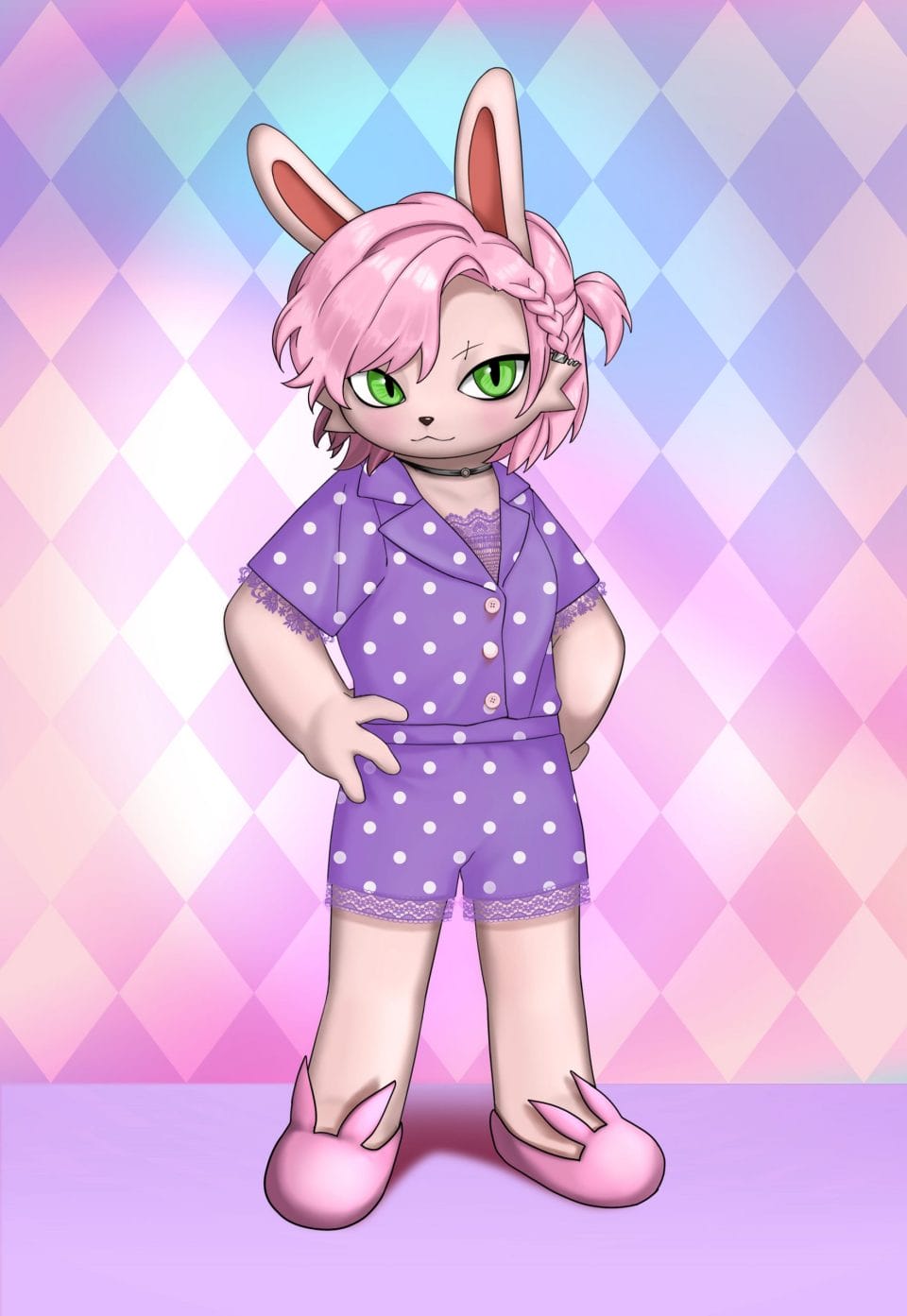 When fashion is pushing its commercial viability by playing with trends, how does technology support this innovation? Is it beneficial for artists and illustrators to participate in this conversation as fashion creatives move their work from the physical to the digital space? How does that reflect on the state of fashion today? We invite Mi Li, Head of AX Studio, to share a meta point-of-view of how this merging of worlds affects her and the industries at large in the third of this four-interview series.
When fashion is pushing its commercial viability by playing with trends, how does technology support this innovation? Is it beneficial for artists and illustrators to participate in this conversation as fashion creatives move their work from the physical to the digital space? How does that reflect on the state of fashion today? We invite Mi Li, Head of AX Studio, to share a meta point-of-view of how this merging of worlds affects her and the industries at large in the third of this four-interview series.
Tell me how you got into like NFTs. You were previously at Financial Times, right?
Yes, as well as South China Morning Post. I’m now the Chief Marketing Officer of Advanced Intelligence Group, or AX Studio, a tech unicorn based in Singapore. AX Studio was founded by me as an internal project earlier this year because I saw a trend of interest in this space, and our company is equipped to support a venture into this. It’s really a perfect combination.
Personally, though, NFTs overlap with my own interests and experiences, and after following this space for almost a year, I was compelled by how fast this space was actually growing. NFTs are about creativity, branding and community building, and that’s exactly where my marketing background can be used. And I am a believer that this is the future. So in the end, I would say NFTs chose me instead since I seem to be the perfect person to run a business like this.
So what does AX Studio do? How do you guys fit into the picture of Web 3.0?
We help Web 2.0 brands build their journey and strategy entry into the Web 3.0 space. The strategic planning starts from the goals of the different brands, and then we work with them on the mechanism, utility values, and overall strategy of their NFT project and content design — the design of the actual NFTs and all the marketing materials. In other words, we help to build all the backend technology in terms of smart contracts and selling capability, as well as product design and marketing pushes for both Web 2.0 and Web 3.0 channels. In the end, we also help them to manage the community, which is also very crucial for the longevity of any NFT project.

So what kind of merchants are you currently working with? You recently did a project with 6ixty8ight so could you tell me what that was about?
6ixty8ight turns 20 this year and they really want to stay current with the younger demographic — their main target audience includes both Gen Z and millennial young women. They came to us with the end goal of wanting to empower them to have the freedom of expression so we collaborated on the design of this half-rabbit half-human avatar. It’s called Bold Bunnies.
We also work with Singaporean homegrown brand IUIGA but we work a little differently with them. We created a jellyfish NFT for them because they wanted to tap onto Web 3.0 to show the transparency and simplicity of their brand. We tested this NFT mini project out during their fifth anniversary sales period to see if this could actually help generate more engagement with the users and also increase product sales. It did so with product sales going up by three-fold; even increasing their furniture sales too. This worked because the purchase of the NFT unlocked premium prices and perks which attracted people to spend more than usual on a single purchase. So this was quite a powerful experiment and really revealed to us too how NFTs could benefit even the smaller brands.
It’s really cool to think that incorporating NFTs into current retail business models can work so seamlessly and effectively. But why do you think NFTs are so popular for businesses only now? And do you think it will remain this way for long?
I would say COVID-19 was what really started this wave. People were starting to lose physical human interactions and touch, so it’s natural that they look for somewhere else like the Metaverse to reconnect with others. But then in the Metaverse, you also get to realise passions and dreams you were not able to achieve in the physical world. That’s the real draw of the whole thing. NFTs are technology plus culture so this is a great way to create close-knit communities for people to feel a sense of belonging — which brands can potentially tap on to turn users into their brand evangelists.
In terms of longevity, brands need to plan for the long term for their projects to be sustainable and to commit to continuously generating exciting values, perks, and special experiences for the community members. And since NFTs are tradable in the secondary marketplace, the more value a brand adds to its NFT, the more it can appreciate which essentially binds brands and consumers together financially. This translates to consumers also wanting the brand to become better by democratising the community which is why brands find it now attractive to bring NFTs on board as well.
It’s also about really understanding what the future implies. When first designing the bunny mascot for 6ixty8ight, I received feedback from the Web 3.0 industry players that said the design was too feminine. It’s true that most of the crypto-users or NFT-holders today are male and the design might not be popular among them, but if you create an NFT purely to attract this specific demographic of people at the expense of the brand’s identity, the project’s failure is inevitable. A compelling brand needs a coherent story, and you need to also show the community that you’re not here just to get short-term gains.

I think that’s really interesting because it’s one thing to acknowledge the male-heavy presence in the Metaverse right now but it’s another to really put one’s beliefs into practice and prepare for the eventual outcome of women entering the Web 3.0 space. So far though, it’s mostly big, luxury fashion houses making big ripples within the NFT community and in the Metaverse. What kind of company is suitable to join the Metaverse at the moment and how would they benefit?
I think it’s natural for those luxury bigger brands to jump in first because they have deep pockets. They can hire people to figure out the strategy and technology for them, and that is why we exist as a studio; to prove to less big brands that you can also join the scene with a very lean model and very small budget. It’s just about having a clear goal in mind. What is the branding? Where is strong brand equity? How are you going to engage the community? Once we are clear with that, it’s fairly easy and we can immediately start to advise brands on how to do that.
The hardest part for them is to understand is how NFTs and the Metaverse can be integrated back to their own company’s growth. Adding value to their existing ecosystem or business goal is where education must come in. A recent workshop I did with the senior management of one of the largest retail companies in the region was really well received because what sounded like a sexy password suddenly became accessible and a puzzle piece that could fit their current business development. So it’s quite important that people share real-life examples, and that is what I have been trying to do with my work.
That’s very interesting but all that is happening in the West. If I’m not wrong, Southeast Asia has the highest NFT adoption right now, or at least eventually at this rate. Since you operate in Singapore, what about this region makes it such a good place for NFTs to grow?
There are two reasons. One is the demographic. If you look at Southeast Asian countries, one in two people are under age 30 and very digital savvy. Some are also digital natives so there’s a relatively lower barrier of entry for those interested to come onboard this space.
Two, we have a very high percentage of people who are unbanked or underbanked. For people who don’t have a credit card, this is another way they can actually leverage their financial assets by skipping the banks and jumping right into the crypto-world directly. That is quite amazing. So this is also a method to really help those who lack the resources they deserve to succeed to be in the foreground of technology.
Community is such a big part of why NFTs are very alluring and attractive to Gen Zers, so do you think that there is an opportunity for women to increase their presence in fashion with this platform by showcasing more of themselves and bringing more to the table?
If NFTs are about community, that community cannot be just one from one dimension, right? You need difference to make the world richer and content more interesting so that more people can come in. That’s why females also need to step up to the game and diversify the current state of the NFT space. Now, the space needs different perspectives and creativities and women are naturally also very good at the arts because of their sensitivity and creative thinking.
Currently, the most active brands who are in this space are from the fashion and beauty industries and their demographic of consumers is mostly female. They definitely have the incentive to bring more female designers and artists in to better understand and cater to the target audience by creating the right product experience for them. It’s old-fashioned to think women can’t do tech. It’s time to be more open-minded.

This makes me think of the term “crypto bros”. I don’t see anyone using the feminine version of that term and I think the existence of such a term puts some people off, including myself, before I can begin to want to understand more about what it is. So I appreciate that you brought this up. So what’s the most exciting thing about NFTs that you’re looking forward to in the next five years?
I can only talk about the next two years. Now that it’s a bear market, a lot of people are questioning NFTs and I think this is actually not a bad thing for this industry. During the market hype, there were many projects that were set up just to grab a quick buck. They don’t actually generate any value in this industry and now will be a good time to filter out those projects from the better, well-planned and intentional ones that will eventually stay.
I guess we can also just let the big players experiment first as they have money to burn. If they fail, it is okay because we take the learnings together and move on. But if there are results, others who are watching very closely will start jumping in.
Once you’re done with this story, click here to catch up with our October 2022 issue.








